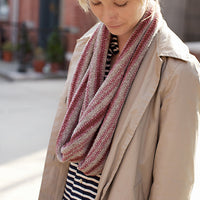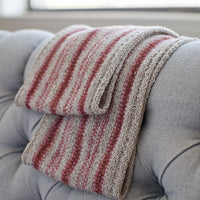Product description
“Traditional ticking fabric was used for mattresses and for upholstering furniture. The densely woven striped fabric contained feathers or straw and prevented painful pokes. The clean lines and simple palettes have kept this a decorator’s favorite. The versatile look is practical and pleasing, with a reassuring homey feel.
While the Ticking Cowl imitates these traditional fabrics, the light, airy hand of Loft knit at a loose gauge has nothing in common with upholstery. Worn doubled or even tripled, it is a floaty layer of warmth that adds interest and a bit of textile history to whatever you’re wearing.
Note that while the pattern is worked in stockinette stitch, the reverse stockinette stitch side is intended to be the true Right Side. The pattern is written in this way to accommodate many knitters’ preference for knitting rather than purling. When the Cowl is worn twisted, both sides may show, so I recommend using a Spit Splice Join or Needle Felted Join when switching between colors. This will create the least obtrusive join, and will minimize finishing work.” – Cirilia Rose
Designer: Cirilia Rose
Collection: Wool People, Volume 3
Share
Ticking Cowl
Reversible Knitted Loop with Stripes




